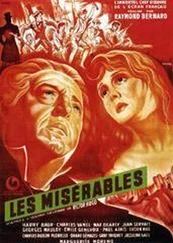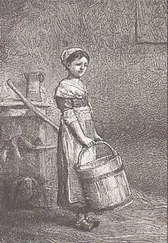Lascelles Wraxall - Les Misérables, v. 1
Здесь есть возможность читать онлайн «Lascelles Wraxall - Les Misérables, v. 1» — ознакомительный отрывок электронной книги совершенно бесплатно, а после прочтения отрывка купить полную версию. В некоторых случаях можно слушать аудио, скачать через торрент в формате fb2 и присутствует краткое содержание. Жанр: literature_19, foreign_antique, foreign_prose, на английском языке. Описание произведения, (предисловие) а так же отзывы посетителей доступны на портале библиотеки ЛибКат.
- Название:Les Misérables, v. 1
- Автор:
- Жанр:
- Год:неизвестен
- ISBN:нет данных
- Рейтинг книги:4 / 5. Голосов: 1
-
Избранное:Добавить в избранное
- Отзывы:
-
Ваша оценка:
- 80
- 1
- 2
- 3
- 4
- 5
Les Misérables, v. 1: краткое содержание, описание и аннотация
Предлагаем к чтению аннотацию, описание, краткое содержание или предисловие (зависит от того, что написал сам автор книги «Les Misérables, v. 1»). Если вы не нашли необходимую информацию о книге — напишите в комментариях, мы постараемся отыскать её.
Les Misérables, v. 1 — читать онлайн ознакомительный отрывок
Ниже представлен текст книги, разбитый по страницам. Система сохранения места последней прочитанной страницы, позволяет с удобством читать онлайн бесплатно книгу «Les Misérables, v. 1», без необходимости каждый раз заново искать на чём Вы остановились. Поставьте закладку, и сможете в любой момент перейти на страницу, на которой закончили чтение.
Интервал:
Закладка:
Victor Hugo
Les Misérables, v. 1/5: Fantine
So long as, by the effect of laws and of customs, social degradation shall continue in the midst of civilization, making artificial hells, and subjecting to the complications of chance the divine destiny of man; so long as the three problems of the age, – the debasement of man by the proletariat, the ruin of woman by the force of hunger, the destruction of children in the darkness, – shall not be solved; so long as anywhere social syncope shall be possible: in other words, and from a still broader point of view, so long as ignorance and misery shall remain on earth, books like this cannot fail to be useful.
HAUTEVILLE-HOUSE, 1862.
BOOK I
A JUST MAN
CHAPTER I
M. MYRIEL
In 1815 M. Charles François Bienvenu Myriel was Bishop of D – . He was a man of about seventy-five years of age, and had held the see of D – since 1806. Although the following details in no way affect our narrative, it may not be useless to quote the rumors that were current about him at the moment when he came to the diocese, for what is said of men, whether it be true or false, often occupies as much space in their life, and especially in their destiny, as what they do. M. Myriel was the son of a councillor of the Aix Parliament. It was said that his father, who intended that he should be his successor, married him at the age of eighteen or twenty, according to a not uncommon custom in parliamentary families. Charles Myriel, in spite of this marriage (so people said), had been the cause of much tattle. He was well built, though of short stature, elegant, graceful, and witty; and the earlier part of his life was devoted to the world and to gallantry. The Revolution came, events hurried on, and the parliamentary families, decimated and hunted down, became dispersed. M. Charles Myriel emigrated to Italy in the early part of the Revolution, and his wife, who had been long suffering from a chest complaint, died there, leaving no children. What next took place in M. Myriel's destiny? Did the overthrow of the old French society, the fall of his own family, and the tragic spectacles of '93, more frightful perhaps to the emigrés who saw them from a distance with the magnifying power of terror, cause ideas of renunciation and solitude to germinate in him? Was he, in the midst of one of the distractions and affections which occupied his life, suddenly assailed by one of those mysterious and terrible blows which often prostrate, by striking at his heart, a man whom public catastrophes could not overthrow by attacking him in his existence and his fortune? No one could have answered these questions; all that was known was that when he returned from Italy he was a priest.
In 1804 M. Myriel was Curé of B – (Brignolles). He was already aged, and lived in great retirement. Towards the period of the coronation a small matter connected with his curacy, no one remembers what, took him to Paris. Among other powerful persons he applied to Cardinal Fesch on behalf of his parishioners. One day, when the Emperor was paying a visit to his uncle, the worthy curé, who was waiting in the ante-room, saw his Majesty pass. Napoleon, noticing this old man regard him with some degree of curiosity, turned and asked sharply, —
"Who is this good man who is staring at me?"
"Sire," M. Myriel said, "you are looking at a good man and I at a great man. We may both profit by it."
The Emperor, on the same evening, asked the Cardinal the curé's name, and some time after M. Myriel, to his great surprise, learned that he was nominated Bishop of D – . What truth, by the way, was there in the stories about M. Myriel's early life? No one knew, for few persons had been acquainted with his family before the Revolution. M. Myriel was fated to undergo the lot of every new comer to a little town, where there are many mouths that speak, and but few heads that think. He was obliged to undergo it, though he was bishop, and because he was bishop. But, after all, the stories in which his name was mingled were only stories, rumors, words, remarks, less than words, mere palabres , to use a term borrowed from the energetic language of the South. Whatever they might be, after ten years of episcopacy and residence at D – , all this gossip, which at the outset affords matter of conversation for little towns and little people, had fallen into deep oblivion. No one would have dared to speak of it, no one have dared to remember it.
M. Myriel had arrived at D – , accompanied by an old maid, Mlle. Baptistine, who was his sister, and ten years younger than himself. Their only servant was a female of the same age as Mademoiselle, of the name of Madame Magloire, who, after having been the servant of M. le Curé, now assumed the double title of waiting-woman to Mademoiselle, and house-keeper to Monseigneur. Mlle. Baptistine was a tall, pale, slim, gentle person; she realized the ideal of what the word "respectable" expresses, for it seems necessary for a woman to be a mother in order to be venerable. She had never been pretty, but her whole life, which had been but a succession of pious works, had eventually cast over her a species of whiteness and brightness, and in growing older she had acquired what may be called the beauty of goodness. What had been thinness in her youth had become in her maturity transparency, and through this transparency the angel could be seen. She seemed to be a shadow, there was hardly enough body for a sex to exist; she was a little quantity of matter containing a light – an excuse for a soul to remain upon the earth. Madame Magloire was a fair, plump, busy little body, always short of breath, – in the first place, through her activity, and, secondly, in consequence of an asthma.
On his arrival M. Myriel was installed in his episcopal palace with all the honors allotted by the imperial decrees which classify the Bishop immediately after a Major-General. The Mayor and the President paid him the first visit, and he on his side paid the first visit to the General and the Prefect. When the installation was ended the town waited to see its bishop at work.
CHAPTER II
M. MYRIEL BECOMES MONSEIGNEUR WELCOME
The Episcopal Palace of D – adjoined the hospital. It was a spacious, handsome mansion, built at the beginning of the last century by Monseigneur Henri Puget, Doctor in Theology of the Faculty of Paris, and Abbé of Simore, who was Bishop of D – in 1712. This palace was a true seigneurial residence: everything had a noble air in it, – the episcopal apartments, the reception rooms, the bed-rooms, the court of honor, which was very wide, with arcades after the old Florentine fashion, and the gardens planted with magnificent trees. In the dining-room, a long and superb gallery on the ground floor, Monseigneur Henri Puget had given a state dinner on July 29, 1714, to Messeigneurs Charles Brûlart de Genlis, Archbishop, Prince of Embrun; Antoine de Mesgrigny, Capuchin and Bishop of Grasse; Philip de Vendôme, Grand Prior of France and Abbé of St. Honoré de Lérins; François de Berton de Grillon, Baron and Bishop of Vence; Cæsar de Sabran de Forcalquier, Bishop and Lord of Glandève, and Jean Soanen, priest of the oratory, preacher in ordinary to the King, and Bishop and Lord of Senez. The portraits of these seven reverend personages decorated the dining-room, and the memorable date, JULY 29, 1714, was engraved in golden letters on a white marble tablet.
The hospital was a small, single-storeyed house with a little garden. Three days after his arrival the Bishop visited it, and when his visit was over asked the Director to be kind enough to come to his house.
"How many patients have you at this moment?" he asked.
Читать дальшеИнтервал:
Закладка:
Похожие книги на «Les Misérables, v. 1»
Представляем Вашему вниманию похожие книги на «Les Misérables, v. 1» списком для выбора. Мы отобрали схожую по названию и смыслу литературу в надежде предоставить читателям больше вариантов отыскать новые, интересные, ещё непрочитанные произведения.
Обсуждение, отзывы о книге «Les Misérables, v. 1» и просто собственные мнения читателей. Оставьте ваши комментарии, напишите, что Вы думаете о произведении, его смысле или главных героях. Укажите что конкретно понравилось, а что нет, и почему Вы так считаете.












